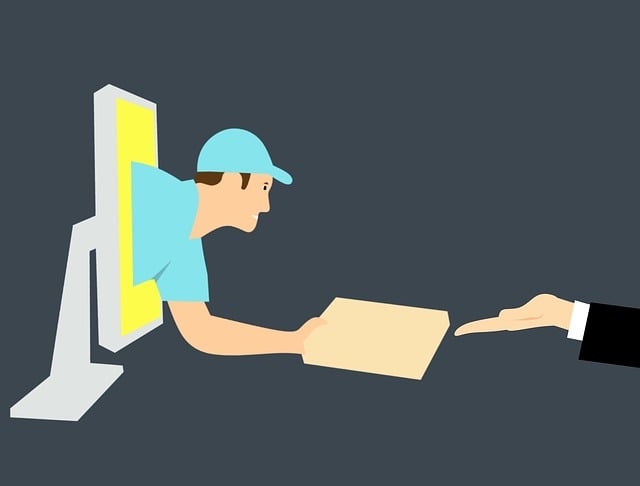The rise of e-commerce in recent years has resulted in various innovative business models- one of the most popular ones being Dropshipping. In this post we'll provide guidance on starting a Dropshipping Business and the associated issues.

This business model allows you to start your own online store without having to invest heavily in inventory or warehouse space. What's more Dropshipping offers many advantages, including low startup costs and flexibility. Additionally, it also comes with unique tax implications, especially in the U.K. In this article, we discuss how starting a dropshipping business works. Also we'll delve into the UK tax considerations, including VAT issues.
How does the Dropshipping Business Model work?
Sourcing your suppliers
The first step in starting a dropshipping business is selecting reputable suppliers or wholesalers. These will be the ones who offer the products you want to sell. So you can try marketplaces like AliExpress, Salehoo or Oberlo for suitable products. What's more these sites offer access to a wide range of products and suppliers. They will be responsible for storing and shipping the products directly to your customers.
Building your online store
Next, you need to set up an online store, which can be done through various e-commerce platforms like Shopify, WooCommerce, or Magento. These platforms provide templates, payment gateways, and inventory management tools. Equally importantly, you'll them need to list the products from your chosen suppliers on your website.
You'll then need to customise your store's design and layout using website builders like WordPress, Wix, or Squarespace. These platforms offer drag-and-drop functionality and templates to create a visually appealing website.
When building your site, you should also set up secure payment gateways like PayPal, Stripe, or Square. These are necessary to process your customer transactions securely. Additionally, ensure your chosen payment platform integrates with your e-commerce platform.
Finally, it's important to implement inventory management software. Because, this is required to track your product availability and automate order processing. Therefore using online tools like Eazystock, Ordoro, or Extensiv, can help streamline your business operations.
What about marketing strategies?
It's imperative to choose a niche aligning with your own interests possessing significant market demand. Additionally, you should invest time in conducting market research to identify trends and competitive products.
So if you can optimise your product listings and website for search engines this improves visibility. Additionally, you should use relevant keywords, high-quality images, and informative product descriptions.
Generally speaking, the most appropriate social media platforms for targeted advertising would be Facebook, Instagram, and Pinterest. Therefore, if you create engaging content and run the right ad campaigns this will attract potential customers.
Additionally, start a blog and or create informative content relating to your niche market. So, if you share valuable insights, how-to guides, and product reviews this will help establish you as an authority attracting organic traffic.
Customer service
It's imperative to respond promptly to customer enquiries and concerns. As a result, excellent customer service should result in positive reviews and repeat business.
Encourage customers to leave reviews and feedback on your website or social media platforms. Because, positive reviews can boost your credibility attracting more customers.
Additionally, if you provide order tracking information to customers, this enables them to monitor their delivery status. As a result, being transparent with your customers ultimately builds trust.
Should your customers be unhappy with their product, establish a clear and customer-friendly return policy. Therefore, make the return process as hassle-free as possible to encourage trust and repeat purchases.
Tax considerations relating to your Dropshipping Business
There are also tax issues you need to contemplate when starting a Dropshipping Business.
Notifying HMRC at the right time
You may have heard about HMRC's One to Many letter campaigns. These relate to taxpayers who HMRC believes have been selling goods or services via an online market place.
What's more HMRC treat any website or mobile phone app handling and enabling sales of goods and services from individuals and/or businesses to customers as an online marketplace. So, it may be a question of when your Dropshipping Business transformed from a hobby to a trade creating allowable losses or taxable profits.
The tests to determine when a business starts and thus makes taxable profits (or allowable losses) are determined by tax case law. However, these tests vary depending on what your activities are.
Therefore, if you start a Dropshipping business intending to make a profit and undertake a degree of financial risk, HMRC may regard this as the point your business starts.
For example, this could be when you launch a new website, leave your day job, raise a sales invoice, pay a supplier, or even incur significant costs.
Choice of business structure
Running a Dropshipping Business you can operate as a sole trader, partnership or limited company. However, which structure is most appropriate depends on a number of factors, particularly the ability to shelter profits from higher rates of tax.
However, future trading profits for sole traders and partnerships will be allocated to tax years regardless of the business’ accounting period end date. The 2023-24 tax year is a transitional one with the new rules fully operative from April 2024.
Additionally, where your business has higher profits in the 2023-24 tax year due to the change in the basis period, an automatic five-year spreading rule applies to the additional profits.
Taxable income
This is your product sales (and shipping costs where appropriate). However, taxable income includes affiliate marketing commissions. This is where other products/services are promoted via your website or there is sponsored content on your website.
Deductible expenses
Below are some examples of the expenditure you can claim for your Dropshipping Business,:
VAT matters
Lastly when starting a dropshipping business, you'll need to consider when UK VAT needs to be charged on your sales.
Registering for VAT
When your sales exceed the UK VAT registration threshold you'll need to register for VAT. Once registered for VAT you must comply with the rules for Making Tax Digital.
Selling overseas.
If you are operating internationally you'll need to consider the place of supply rules to determine the correct VAT treatment. Therefore, it might be necessary to register for VAT in other EU countries.
Additionally online marketplaces can be held jointly and severally liable for the UK VAT of an overseas business. Even though it is not established in the UK a business may sell goods in the UK via your website.
Changes following Brexit
We covered these changes in a previous post, however put simply if you're a UK business selling goods to EU customers, EU VAT registration may be necessary.
VAT Flat Rate Scheme
Once you're VAT registered you can take advantage of the VAT Flat Rate Scheme. This scheme applies a flat VAT percentage to your VAT-inclusive turnover. If you're a Dropshipping Business you'll probably be regarded as a limited cost trader. This is because you don't carry stock. Therefore the lowest rate you can use would be 16.5%. However there is a 1% discount in the first year and so you could join the scheme for one year using the reduced rate of 15.5%.
For more useful information, check out our Ebooks here.
And if you'd like to know how we can help you with all of this, or with anything else, feel free to give us a call on 01202 048696 or email us at [email protected].
Alternatively, please feel free to complete our Business Questionnaire here.
